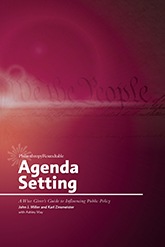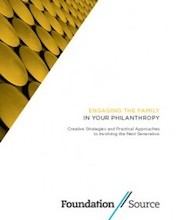Site Search
- resource provided by the Forum Network Knowledgebase.
Search Tip: Search with " " to find exact matches.

Donating money to modify public thinking and government policy has now taken its place next to service-centered giving as a constructive branch of philanthropy. Many donors now view public-policy reform as a necessary adjunct to their efforts to improve lives directly.
This is perhaps inevitable given the mushrooming presence of government in our lives. In 1930, just 12 percent of U.S. GDP was consumed by government; by 2012 that had tripled to 36 percent. Unless and until that expansion of the state reverses, it is unrealistic to expect the philanthropic sector to stop trying to have a say in public policies.
Sometimes it’s not enough to build a house of worship; one must create policies that make it possible for people to practice their faith freely within society. Sometimes it’s not enough to pay for a scholarship; one must change laws so that high-quality schools exist for scholarship recipients to take advantage of.
Yet public-policy philanthropy has special ways of mystifying and frustrating practitioners. It requires understanding of governmental practice, interpretation of human nature, and some philosophical perspective. Public-policy philanthropists may encounter opponents operating from different principles who view them as outright enemies. Moreover, public-policy struggles never seem to end: victories one year become defeats the next, followed by comebacks, then setbacks, and on and on.
This book was written to help donors navigate all of those obstacles. It draws on deep history and rich interviews with the very best practitioners of public-policy philanthropy in America today. Whatever your aspirations for U.S. society and governance, this guide will help you find the best ways to make a difference.
On October 5, 2015, Building Public-Private Partnerships to Enhance Disaster Resilience: A Listening Session was convened by the Office of the Assistant Secretary for Preparedness and Response (ASPR) Division for At-Risk Individuals, Behavioral Health, and Community Resilience (ABC)and co-hosted with Grantmakers In Health (GIH). This is a summary of the final meeting report.
On March 9th, 2023, the City of Newark unveiled a Harriet Tubman monument in the newly re-named Harriet Tubman Square. The Newark Philanthropic Liaison played a key role on the monument project team for two years, ensuring that funds were available to make the vision of the Mayor and community a reality. We are proud to be a grantee of the Mellon Foundation’s Monuments Project, and appreciate the significant philanthropic support of Audible, Inc. and the partnership of the Newark Museum of Art, Rutgers University – Newark, and the Newark Public Library. In addition to foundation partnerships, the NPL’s office designed and led a “Buy a Brick” campaign raised nearly $40,000 from almost 200 individual donors.
Related Stories
A Monument to Harriet Tubman Replaces a Columbus Statue in Newark

